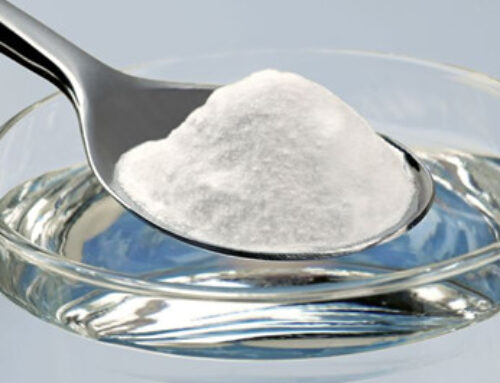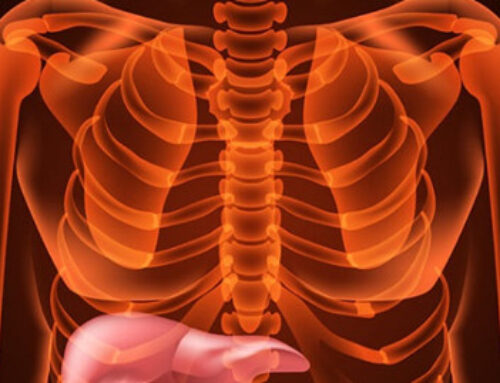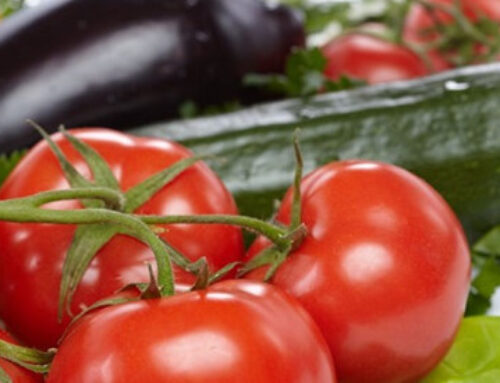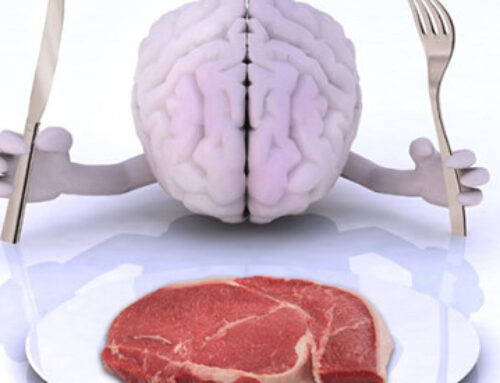In this article, I discuss high blood pressure, a common problem for many people. New research shows that what we have been told for years—that salt causes hypertension—may not be so accurate. I also offer some workable alternatives to slashing sodium in your diet.
High blood pressure (hypertension) is quite common today. Many people are diagnosed with it, but I have noticed that most don’t seem too concerned. It might be because the seriousness of the diagnosis is not typically discussed and pills are thrown at us without considering nutritional therapy alternatives. Many of us just accept hypertension as a part of the aging process, but for those of you who read my newsletter, you probably know I don’t like the aging excuse for many of the disorders that strike those of us that might be considered ‘older’. I have known people diagnosed with high blood pressure, some at quite young ages, to live very long, healthy lives. A diagnosis of hypertension should not be met with apathy, nor fear. Armed with the knowledge of nutritional therapy, this diagnosis can often be reversed.
Some of the physical signs of hypertension include ringing in the ears, dizziness, headache, pulsing in the neck or ears, shortness of breath, blurred vision, nervousness and nosebleeds. Most people will not experience any physical symptoms at all—this is when hypertension can become a serious problem.
From a functional point of view, elevated blood pressure is caused by constriction of the body’s blood vessels. The heart has to beat harder to move blood through narrowed vessels, and this can put a lot of stress on the heart and other organs. This stress increases the risk of heart attack, stroke and kidney disease. But what is causing the constriction of these vessels? The same thing that causes so many other diseases and disorders: inflammation. Inflammation is at the root of almost all modern diseases. But the bigger question is, what is causing the epidemic of inflammation? Digging down to determine the root cause of inflammation is a great place to start, as it gives you a game plan for managing your hypertension.
As I do my research for this article, I am struck by the amount of information regarding foods that will lower hypertension. It seems that one of the biggest contributors to hypertension is likely the lack of truly good, nutrient-dense, health-promoting foods in our diet. Out of hundreds, here are just a few examples of papers written on hypertension (I thought the titles alone were very telling):
Studies have shown that a diet that includes flax seed will lower high blood pressure.
A Chinese study showed that a higher level of fruit consumption was associated with lower levels of blood pressure.
Aged garlic extract reduces blood pressure in hypertensives.
Watermelon supplementation reduces arterial stiffness and aortic systolic blood pressure.
Vitamin D was found to have a moderate effect of lowering systolic blood pressure.
Present meta-analysis suggest consistent benefits of pomegranate juice on blood pressure.
Cocoa products have blood pressure lowering capacity.
Some of the foods I have found in research studies that lower blood pressure levels are: all fruits and vegetables that are high in fiber and phytochemicals like polyphenols and flavonoids (think garlic, beets, pomegranates, red wine, Brazil nuts, pistachios, cocoa and dark chocolate, tart cherries, coconut water, cranberry juice, concord grapes, hibiscus tea, chokeberries, blueberries) and herbs and spices (especially tamarind, cardamom, green coffee and green tea) (1, 2). Replacing fatty acids found in processed foods with healthy fatty acids like extra virgin olive oil is another easy way to lower your blood pressure and enjoy the many health benefits associated with increasing monounsaturated fat consumption, such as reduced risk of heart disease. A recent study showed that replacing fatty acids found in processed foods, like corn and soybean oil, with healthy fatty acids like extra virgin olive oil, lowered blood pressure and had cardio-protective and immunological health benefits (3). (See my article The Bad Fat.)
The idea that salt is the cause of high blood pressure is ridiculous. This has been pushed on us by diet dictocrats for decades, causing many people to suffer from sodium levels that are too low. Actually, an imbalance between potassium and sodium, studies are showing, can cause high blood pressure in many cases (4). Not to mention the wonderful flavors of good nutritious foods that have suffered from lack of salt as well, since salt truly enhances the flavors of food. The percentage of individuals who are hypertensive sodium sensitive is low, less than 1%. These individuals should watch their sodium intake. The salt we consume, regardless of our blood pressure, should come from a natural source like Real Salt®, mined in Utah, Celtic sea salt or Himalayan pink salt. These salts are balanced with an abundance of trace minerals. They taste great, not as salty or flat as table salt. Table salt is processed with only sodium, chloride and sometimes iodine in it, and is not as health-promoting as salt mined from natural sources containing natural minerals.
Recently, the hypertension debate has been shifting to blame sugar, not salt (4). In past articles, I have discussed how fructose causes inflammation. This inflammation increases blood pressure. In obese individuals, reducing fructose consumption reduces blood pressure significantly (5)! Research also shows that the antioxidants and fiber found in fruits combat the inflammatory effect of fructose (5). This means fruit is still a heathy choice, but remember that high fructose corn syrup is pro-inflammatory and does not carry with it the health benefits of whole fruits.
Weight has a significant impact on blood pressure. Research shows people who are overweight have a much higher risk of hypertension (6). In fact, a groundbreaking French study found that weight had the most significant impact on blood pressure—a greater impact than sodium consumption, healthfulness of diet, age and physical activity (6). A nutritious, balanced diet and active lifestyle is the best way to reduce your weight and increase your health and longevity—and, we now know, the best way to reduce your risk of hypertension.
Is our epidemic of hypertension really just a huge malnutrition problem? Brought on by the consumption of packaged and processed foods, of which many are extremely high in high fructose corn syrup, and other anti-nutrients, manifesting as inflammation, resulting in high blood pressure? Malnutrition may be part of the problem yes, because malnutrition can absolutely contribute to inflammatory issues in the body, but other research points to environmental toxins that can increase blood pressure levels as well. BPA toxin, used in the production of plastics, is found in (but not limited to) plastic bottles, canned food liners, and the receipts you get from almost any purchase you make. BPA coated receipts will deliver a dose of toxic BPA in just seconds through your skin, directly into your blood stream. BPA can effect blood pressure almost immediately (7). Benzene and heavy metals like mercury and arsenic will increase the body’s level of inflammation, and are linked to hypertension also (8). (See my article Four Reasons we have Inflammation.)
If you have a diagnosis or a family history of high blood pressure, cleaning up your diet and removing processed foods that are high in fructose and other compounds that promote inflammation is a great start to lowering inflammation and blood pressure levels. Educating yourself about environmental toxins and avoiding them will keep the levels of toxins that promote inflammation down, and therefore high blood pressure can start to drop back into the normal range. Avoiding high fructose corn syrup, and consuming anti-inflammatory oils such as olive, copious amounts of organic vegetables, moderate amounts of fruit, and reducing your weight can also reduce hypertension. These dietary changes are a good idea for many health reasons, not limited to just blood pressure issues—they can reduce your risk of other diseases as well (3).
Here are some options for the judicious use of supplementation to help, along with dietary changes, to bring blood pressure back into the normal range. Starting with L-arginine, and taurine, both are amino acids that cause the blood vessels to relax. Nigella sativa, also known as black seed or black cumin, has shown to lower blood pressure in hypertensive individuals (3). And nitric oxide, a gas that is produced as a by-product of vitamin D synthesis from sun tanning, also causes blood vessels to relax. I knew sun tanning made me feel good! The herbs Tribulus terrestris and turmeric; sulforaphane, which is found in cruciferous veggies and can be purchased as a supplement; sweet lime; and many others can be used to help with hypertension. And of course I will always recommend working with an experienced nutritional therapy practitioner who knows how to guide and support you as you make these health changes. With dietary changes, not only will blood pressure improve, but weight loss will often be a terrific side effect, and cardiovascular issues and diabetes can heal too. Healing one aspect of a person’s body results in a cascade effect of multiple issues resolving. It is truly wonderful the way our body works!
Many thanks to Sara Scheler for her research contributions to this article.
Cited References:
- Golzarand M, Bahadoran Z, Mirmiran P, Sadeghian-Sharif S, Azizi F. Dietary phytochemical index is inversely associated with the occurrence of hypertension in adults: a 3-year follow-up. Eur J Clin Nutr. 2015 Mar ;69(3):392-8. Abstract available here. Accessed February 2017.
- Mohammadifard N, Selehi-Abargouei A, Salas-Salvado J, Guasch-Ferre M, Humphries K, Sarrafzadegan N. The effect of tree nut, peanut, and soy nut consumption on blood pressure: a systematic review and meta-analysis of randomized controlled clinical trials. Am J Clin Nutr. 2015 May ;101(5):966-82. Abstract available here. Accessed February 2017.
- Rozati M, Barnett J, Wu D, Handleman G, Saltzman E, Wilson T, li L, Wang J, Marcos A, Ordovas J, Lee Y, Meydani M, Nikbin S, Meydani N. Cardio-metabolic and immunological impacts of extra virgin olive oil consumption in overweight and obese older adults: a randomized control trial. Nutr. Metab. 2015; 12(28).
- King, M. Sugar-not salt-bigger threat to blood pressure. Green Med Info. 22 Dec 2014. Available here. Accessed February 2017.
- Johnson R, Sanchez-Lozada L, Nakagawa T. The Effect of Fructose on Renal Biology and Disease. J Am. Soc. Nephrology. 2010 Dec;21(12):2036-2039. Full text available here. Accessed February 2017.
- Lelong H, Galan P, Kesse-Guyot E, Fezeu L, Hercberg S, Blacher J. Relationship Between Nutrition and Blood Pressure: A Cross-Sectional Analysis from the NutriNet-Santé Study, a French Web-based Cohort Study. Am J Hypertens 2015; 28 (3): 362-371. Available here. Accessed February 2017.
- Adams C. BPA-lined containers hike blood pressure-immediately. Green Med Info. 26 May 2015. Abstract available here. Accessed February 2017.
- Brannan E, Su S, Alverson B. Elemental mercury poisoning presenting as hypertension in a young child. Pediatr Emerg Care. 2012 Aug ;28(8):812-4. Abstract available here. Accessed February 2017.
- Kim J, Gum S, Paik J, Lim H, Kim K, Ogasawara K, Inoue K, Park S, Jang Y, Lee J. Effects of nattokinase on blood pressure: a randomized, controlled trial. J Cell Physiol. 2010 Jun;223(3):771-8. Abstract available here. Accessed February 2017.
- Sahebkar A, Soranna D, Liu X, Thomopoulos C, Simental-Medina L, Derosa G, Maffioli P, Parati G. A systematic review and meta-analysis of randomized controlled trials investigating the effects of supplementation with Nigella sativa (black seed) on blood pressure. J Hypertens. 2016 Aug 10. Abstract available here. Accessed February 2017.
- Xi B, Huang Y, Reilly KH, Li S, Zheng R, Barrio-Lopez M, Martinez-Gonzalez M, Zhou D. Sugar-sweetened beverages and risk of hypertension and CVD: a dose-response meta-analysis. Br J Nutr. 2015 Mar 14 ;113(5):709-717. Abstract available here. Accessed February 2017.










